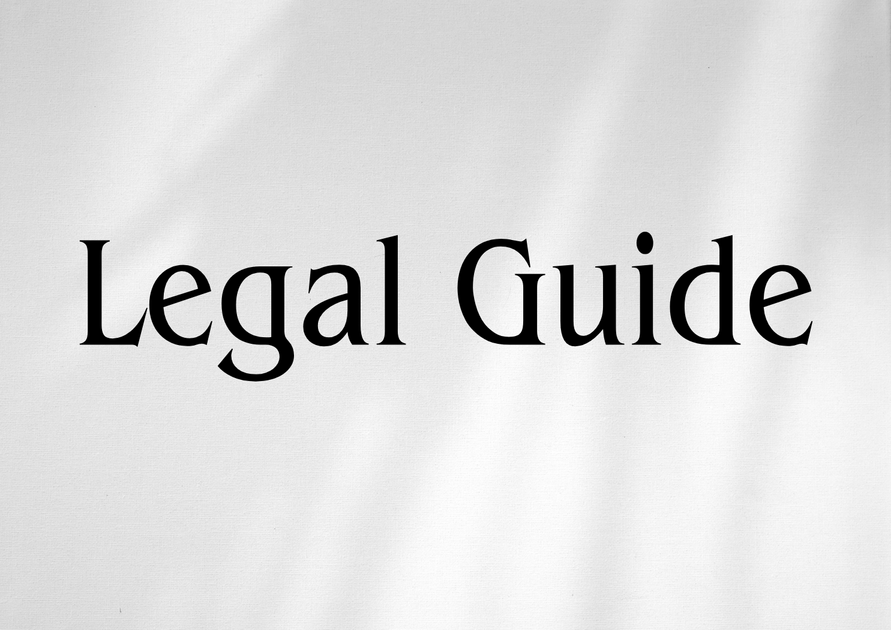Introduction: The Critical Significance of Aircraft Sale and Purchase Agreements in Qatar
As the Middle East’s aviation sector witnesses robust growth, Qatar stands at the forefront of aircraft financing, trading, and leasing activities in the region. For UAE-based companies, legal professionals, and industry stakeholders, understanding the legal framework governing Aircraft Sale and Purchase Agreements (ASPAs) in Qatar is crucial for risk mitigation, operational efficiency, and regulatory compliance. In recent years, Qatar has undertaken steady reforms, aligning its aviation laws with international best practices and regional obligations. Simultaneously, the UAE’s dynamic legal environment—encompassing the Federal Decree-Law No. 20 of 2018 on Anti-Money Laundering, and the Cabinet Resolution No. 29 of 2021 concerning the registration of security interests—necessitates a nuanced, comparative approach.
This article offers an in-depth, practical analysis of Qatar’s legal framework for ASPAs, highlighting the implications and best practices for UAE businesses. Drawing on authoritative regional and international sources, we assess current obligations, risks, and opportunities, while providing actionable legal strategies for compliance—as well as readiness for upcoming industry and regulatory developments.
Table of Contents
- Qatar Aviation Regulatory Framework: Governing Laws and Key Regulators
- Core Elements of Aircraft Sale and Purchase Agreements in Qatar
- Registration, Title Transfer, and Aircraft Financing in Qatar
- Legal Compliance, Due Diligence, and Transaction Risks
- Comparative Perspective: UAE and Qatar—Legal Developments and Practice
- Case Studies & Real-World Implications
- Practical Risk Strategies and Compliance Best Practices
- Conclusion & Forward-Looking Outlook
Qatar Aviation Regulatory Framework: Governing Laws and Key Regulators
Legislation and Regulatory Authorities
Aircraft sale and purchase transactions in Qatar are governed by a comprehensive legal regime, centralized within the following core instruments:
- Law No. 15 of 2002 (Qatar Civil Aviation Law): Establishes the foundational regime for aircraft registration, operation, and commercial dealings.
- Cabinet Decision No. 9 of 2017: Addresses registration mechanisms, airworthiness requirements, and transfer of ownership.
- Qatar Civil Aviation Authority (QCAA): The primary regulator, responsible for registration, operational approvals, and oversight of compliance in aviation commercial dealings.
- International Conventions: Qatar is a signatory to the 1944 Chicago Convention, the 2001 Cape Town Convention on International Interests in Mobile Equipment, and adheres to ICAO standards.
Compliance with these regimes is not merely procedural. It is an enforceable legal requirement, with the QCAA wielding broad powers to inspect, approve, and—withhold or revoke—registration and transfer applications. For UAE-based investors and operators, engagement with Qatari authorities often necessitates localization of documents, translation certifications, and, in specific cases, appointment of an in-country legal representative.
Key Compliance Touchpoints
- Verification of aircraft title and existence of encumbrances
- Submission of QCAA-compliant ASPA documentation
- Tax, customs, and anti-money laundering diligence, particularly for cross-border transactions
- End-user certificate for aircraft imports/exports (as per QCAA and Qatar Customs)
Core Elements of Aircraft Sale and Purchase Agreements in Qatar
Essential Provisions
Aircraft Sale and Purchase Agreements in Qatar customarily mirror internationally-accepted formats, but local law modifies or mandates particular provisions. Key elements include:
- Detailed Description of Aircraft: Manufacturer, serial number, registration marks, airworthiness status.
- Purchase Price and Payment Terms: Clear payment mechanisms (including QCB-approved banking channels), milestone payments, escrow arrangements, and financial security instruments.
- Conditions Precedent: Regulatory consents (QCAA, Ministry of Transport), satisfaction of warranties, lien releases, export/import clearances.
- Warranties and Representations: Title, airworthiness, absence of undisclosed liens/encumbrances, logbooks accuracy.
- Risk Allocation Clauses: Insurance provisions, allocation of risks pre- and post-completion, indemnity, and force majeure.
- Closing Mechanics: Timing, location, delivery acceptance protocols, QCAA notifications, payment and document exchanges.
- Governing Law and Dispute Resolution: While parties may select English, New York, or Qatari law, QCAA requirements often demand a submission to Qatari courts or prescribed arbitral frameworks.
Qatari Law Modifications and Public Policy Concerns
Qatar’s Civil Aviation Law imposes mandatory terms in certain cases, notably regarding sellers’ warranties (Article 59–61, Law No. 15/2002), minimum insurance requirements, and transfer registration protocols. Of particular note is the statutory prohibition on transfer of aircraft registered in Qatar without QCAA pre-approval—a material element frequently scrutinized in legal due diligence.
Registration, Title Transfer, and Aircraft Financing in Qatar
Registration Workflow with QCAA
Transfer of title to an aircraft in Qatar is incomplete absent effective registration and annotation with the QCAA. The main steps include:
- Submission of ASPA (with notarized Arabic translation if executed abroad)
- Payment of QCAA Stamp Duty/Fees
- Provision of Evidence of Discharge of Liens and Encumbrances (if applicable)
- Technical and Legal Scrutiny (QCAA inspection and review of logbooks, historical operations, etc.)
- Issuance of New Certificate of Registration (to new owner upon satisfaction of all legal and regulatory requirements)
It is vital for UAE entities engaged in cross-border transactions to ensure that the buyer’s and seller’s agents synchronize documentation submission, obtain QCAA preliminary approval in principle, and ringfence all regulatory timelines in the ASPA bargaining stage.
Secured Financing and Security Interests
Aircraft acquisition often involves complex financing structures, including bank lending, operating or finance leases, and export credit deals. Qatar’s adoption of the Cape Town Convention (with local implementation under Law No. 9 of 2015) now enables parties to register security interests over aircraft (and associated engines), facilitating international enforcement and compliance. However, local annotation with the QCAA aircraft register remains mandatory for enforceability vis-à-vis third parties in Qatar. UAE financiers and lessors must therefore pursue a twin-track process: Cape Town registration plus QCAA annotation.
| Aspect | Pre-Cape Town Regime | Post-Cape Town Implementation (Law No. 9/2015) |
|---|---|---|
| Recognition of International Security Rights | Not standardized; enforcement risk | Global recognition, reduced enforcement barriers |
| Required Registration | Local QCAA only | Dual: Cape Town International Register + QCAA annotation |
| Priority of Claims | QCAA chronological entry | Cape Town priority rules adjusted to local law—parties can contract out |
| Disclosure Obligations | Limited; subject to QCAA administrative rules | Cape Town disclosure requirements + QCAA filings |
Visual Suggestion: A process flow diagram showing the step-by-step registration and security annotation workflow for ASPA transactions in Qatar, emphasizing QCAA checkpoints and Cape Town registration intersection.
Legal Compliance, Due Diligence, and Transaction Risks
Due Diligence Protocols
Conducting robust legal and technical due diligence is indispensable to mitigate hidden risks. A best-practice approach would include:
- Title Verification: Examination of the QCAA register, previous ASPAs, and Cape Town records
- Encumbrance Search: Identifying open security interests, legal claims, and undisclosed financier rights
- Regulatory Approvals Audit: Ensuring all relevant QCAA, customs, export/import, and anti-money laundering (AML) approvals are in place
- Tax Exposure Assessment: Identifying VAT, import duties (if the aircraft is re-registered cross-border), and Qatari tax exposure
- Technical Diligence: Assessment of airworthiness, compliance with ICAO annexes, and maintenance record audits
Risks of Non-Compliance
Failure to comply with Qatar’s ASPA-related regulations can result in significant legal and financial liabilities, including:
- Administrative penalties (QCAA fines, suspension or annulment of registration)
- Nullification of title transfer vis-à-vis third parties
- Exposure to criminal prosecution (in the event of AML or customs law infractions under Law No. 20/2019)
- Cross-border seizure risks if documentation or filings are defective—causing commercial aircraft to be grounded
Visual Suggestion: Compliance checklist for organisations involved in ASPA transactions in Qatar, with dedicated columns for UAE-headquartered multinationals.
Comparative Perspective: UAE and Qatar—Legal Developments and Practice
Comparison Table: Aircraft Transaction Regulatory Regime
| Aspect | UAE (Latest Federal Decrees) | Qatar (Law No. 15/2002, Cape Town Law No. 9/2015) |
|---|---|---|
| Principal Regulator | General Civil Aviation Authority (GCAA) | Qatar Civil Aviation Authority (QCAA) |
| Aircraft Registration System | GCAA e-book system; Federal Law No. 20/2021 compliant | QCAA physical register; Law No. 15/2002 |
| International Conventions | Cape Town, Chicago, ICAO, Montreal conventions | Cape Town, Chicago, ICAO conventions |
| Security Interests Regulation | Federal Decree-Law No. 20/2018; Cabinet Resolution No. 29/2021 | Law No. 9/2015 (Cape Town) |
| Language and Document Requirements | Arabic (mandatory), English permitted if attached with attested translation | Arabic (mandatory), foreign docs require certified translation |
| Dispute Resolution | UAE courts or agreed arbitration | Qatari courts or agreed arbitration (QIDRC, ICC, LCIA options) |
| AML and Tax Compliance | Strong AML framework (Law No. 20/2018); 5% VAT | AML Law No. 20/2019; limited VAT for international deals |
Key Developments for UAE Stakeholders
- Increasing recognition of dual registration for security interests improves cross-border financing confidence
- Harmonization of KYC, AML, and beneficial ownership requirements (especially since 2022 updates; UAE: Cabinet Resolution No. 58/2020, Qatar: Law No. 20/2019)
- Convergence in technical airworthiness standards as a result of ongoing ICAO harmonization processes
For UAE clients, these trends mean smoother transactional workflows, reduced contractual uncertainty, and greater cross-border asset liquidity—but also a need for rigorous compliance across jurisdictions.
Case Studies & Real-World Implications
Case Study 1: UAE-Based Lessor Acquires Qatari Aircraft
Scenario: An Abu Dhabi-based leasing company acquires two A320neos, previously operated and registered in Qatar. The lessor must repatriate the aircraft to the UAE after resolving encumbrances and effecting deregistration.
Analysis: The lessor’s main legal hurdles include obtaining a QCAA certificate of deregistration (necessitating Qatari customs and tax clearance), discharging two hypothecations registered with the QCAA, and observing UAE Ministry of Economy import controls and GCAA re-registration protocols. The transaction succeeds only through synchronized engagement of Qatari and UAE legal and technical advisors, highlighting the requisites of dual compliance—and the commercial risks of partial or defective filings.
Case Study 2: Deferred Transfer and Non-Compliance Risks
Scenario: A Qatari private operator contracts to sell an Embraer Legacy to a UAE family office, requiring deferred closing while regulatory approvals are pending. Seller delivers the aircraft physically, but title transfer is not immediately annotated on the QCAA register.
Analysis: The buyer faces the risk of a deficient title, exposure to intervening creditors (should the seller become insolvent), and potential criminal liability for unauthorized operation or export. The case underscores the advisability of establishing robust escrow and documentary release mechanisms, and ensuring real-time QCAA filings, to avoid nullification of the transfer or loss of substantial value.
Practical Risk Strategies and Compliance Best Practices
Recommended Compliance Strategies
With increasing regulatory scrutiny and harmonization pressures, UAE and Qatari entities can safeguard their commercial interests through:
- Early Engagement with Local Counsel: Retain legal advisors familiar with both Qatar and UAE aviation, corporate, and AML laws. This is essential for effective document localization and messaging to authorities.
- Integrated Due Diligence: Combine legal, financial, and technical audits to ensure all regulatory, security, and fiscal exposures are identified and quantified at the term sheet stage.
- Escrow and Security Instruments: Utilize escrow accounts and registered security interests to ringfence transaction proceeds and collateralize performance obligations. Ensure dual registration (QCAA and Cape Town Registry for Qatar; GCAA for the UAE).
- Data Room and Documentation Management: Maintain a project-managed data room for ASPA negotiations, QCAA/GCAA filings, and post-closing compliance records.
- Liaison with Regulators: Proactively coordinate with the QCAA, GCAA, customs, and tax authorities; schedule pre-clearance meetings for high-value or abnormal deals.
- Contractual Protective Clauses: Insert robust warranties, indemnities, and MAC (Material Adverse Change) clauses, tailored to Qatari and UAE public policy issues.
- AML and Beneficial Ownership Reporting: Ensure parties are compliant with both Qatari and UAE KYC, AML, and beneficial ownership filings, as per the latest resolutions (UAE: Cabinet Res. 58/2020, Qatar: AML Law No. 20/2019).
Visual Suggestion: A compliance checklist table for multinational ASPA transactions between UAE and Qatari companies—covering legal, technical, and financial due diligence as well as registration milestones.
Conclusion & Forward-Looking Outlook
Qatar’s evolving legal regime for Aircraft Sale and Purchase Agreements is emblematic of the region’s ambition to serve as a global aviation and financing hub. Its alignment with international standards—particularly through adoption of the Cape Town Convention—offers comfort for UAE-based operators, lessors, and financial institutions, though it introduces new complexities and diligence requirements for cross-border transactions.
Looking ahead, regional harmonization—especially in security interests, AML, and technical compliance—promises to further standardize transaction processes and enhance asset liquidity. For stakeholders, the opportunity is significant, but so is the need for sustained legal vigilance, proactive risk management, and the development of in-house and external specialist capabilities. The most successful UAE clients will be those who treat compliance as a dynamic process, not a procedural formality—continuously updating their risk frameworks, engaging in regular legal training, and establishing robust communications with regulatory bodies on both sides of the border.
If your organization is contemplating an aircraft transaction involving Qatar, engage experienced legal counsel early, audit your policies for cross-jurisdictional alignment, and invest in a harmonized compliance protocol to secure deal value and regulatory peace of mind in 2025 and beyond.




